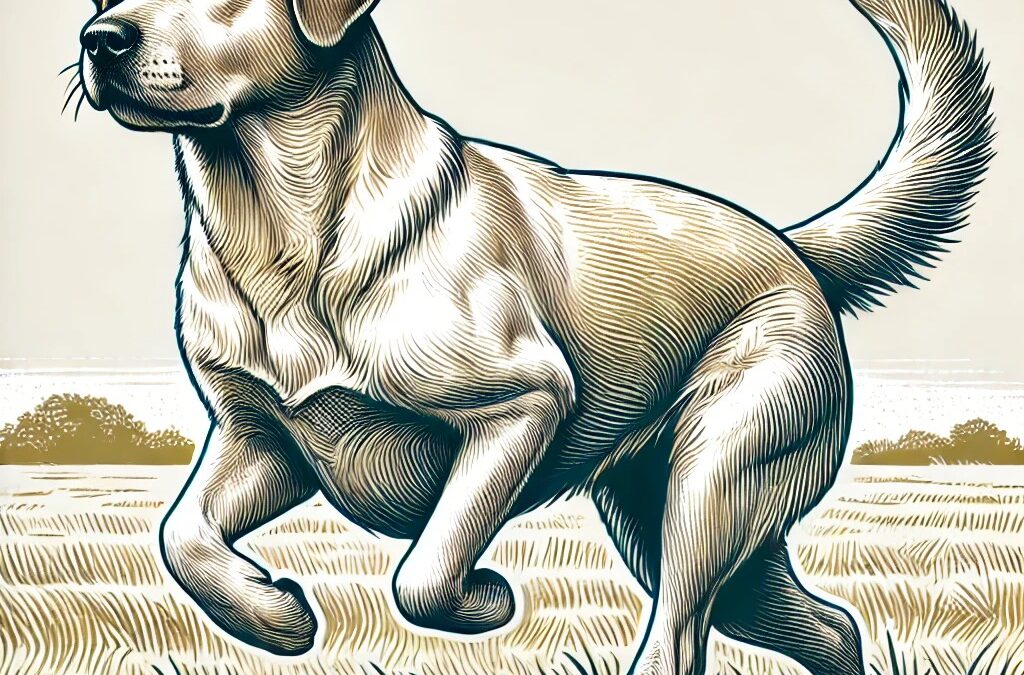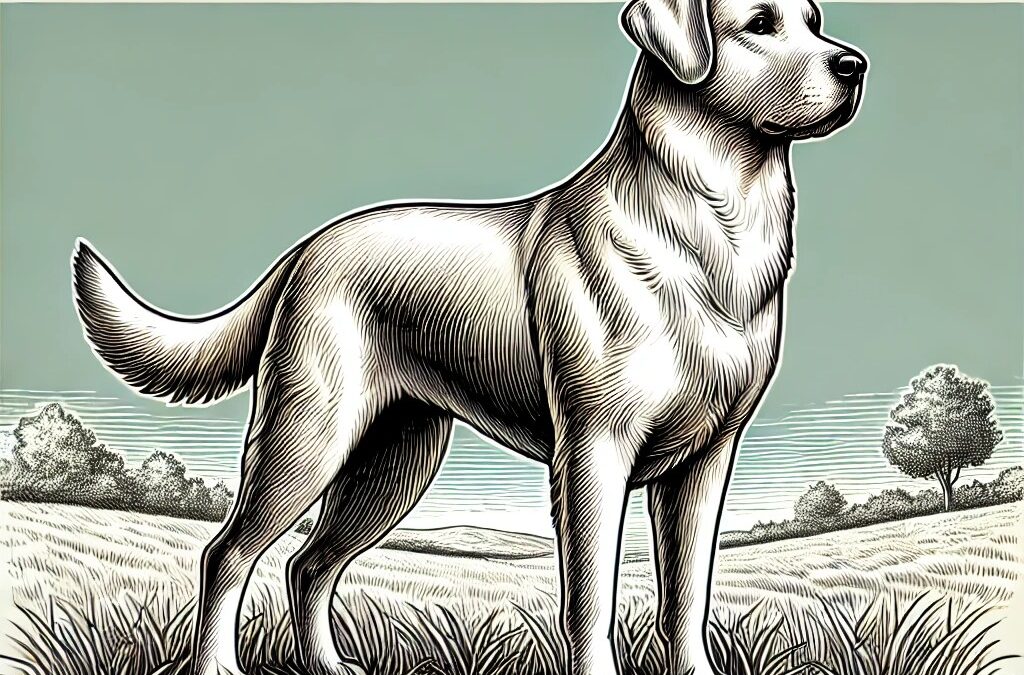
by TCMVET | Jul 4, 2024 | Dog Cancer & Tumors
When our beloved pets face serious health challenges like cancer or osteoporosis, maintaining their spirits becomes as crucial as their medical treatment. A happy and content dog can cope better with the rigors of treatment and recovery. This article explores various strategies to keep your dog happy during their treatment journey, ensuring they enjoy quality life even in tough times.
Understanding the Emotional Needs of Dogs
Dogs, much like humans, experience a range of emotions. The stress of medical treatments can affect their mood and behavior. Recognizing the signs of distress and implementing strategies to uplift their spirits can significantly improve their overall well-being.
Creating a Comfortable Environment
- Safe Space: Ensure your dog has a comfortable and quiet place to rest. A cozy bed in a familiar environment can help them feel secure.
- Consistency: Maintain a consistent routine to provide a sense of normalcy. Regular feeding, walking, and playtime can create a stable environment amidst the changes brought by treatment.
Engaging Activities and Mental Stimulation
- Interactive Toys: Puzzle toys and treat dispensers can keep your dog mentally engaged and distracted from any discomfort.
- Gentle Play: Adapt playtime to your dog’s energy levels. Gentle games like tug-of-war or fetch with a soft toy can provide enjoyment without overexerting them.
- Training Sessions: Short, positive reinforcement training sessions can be a fun way to keep their mind active and strengthen your bond.
Physical Comfort and Care
- Massage Therapy: Gentle massages can relax your dog and alleviate some physical discomfort associated with their condition.
- Hydrotherapy: Swimming or water therapy can be beneficial, especially for dogs with osteoporosis, as it provides low-impact exercise.
- Proper Grooming: Regular grooming can make your dog feel better and promote bonding time. Pay attention to any sensitivities they might have due to treatment.
Nutrition and Treats
- Balanced Diet: Ensure your dog receives a nutritious diet that supports their health. Consult your vet for dietary recommendations tailored to their condition.
- Healthy Treats: Reward your dog with healthy treats that won’t interfere with their treatment. Small, frequent rewards can boost their mood.
Emotional Support and Companionship
- Quality Time: Spend quality time with your dog, providing them with the attention and affection they need. Simple activities like cuddling or sitting together can be immensely comforting.
- Socialization: If your dog enjoys the company of other dogs or people, arrange for controlled social interactions. This can help them feel less isolated.
- Positive Reinforcement: Use positive reinforcement to encourage good behavior and resilience. Celebrate small victories to keep their spirits high.
Monitoring and Adjusting
- Regular Check-ups: Keep up with veterinary appointments to monitor your dog’s progress and adjust their treatment plan as needed.
- Behavioral Changes: Be vigilant for any changes in your dog’s behavior that might indicate pain or distress. Early intervention can prevent further discomfort.
Keeping your dog happy during treatment for cancer or osteoporosis involves a combination of physical care, mental stimulation, and emotional support. By creating a comfortable environment, engaging in enjoyable activities, and providing consistent companionship, you can help your dog navigate their treatment journey with a positive spirit. Remember, a happy dog is more resilient and better equipped to cope with the challenges of medical treatment.

by TCMVET | Jul 4, 2024 | Dog Cancer & Tumors
As pet owners, we strive to provide our furry companions with the best care possible. However, two significant health concerns, canine cancer and osteoporosis, pose serious risks to their well-being. This article delves into the risk factors associated with these conditions and offers insights into prevention strategies, aiming to equip pet owners with the knowledge needed to safeguard their dogs’ health.
Understanding Canine Cancer
Canine cancer is a leading cause of death among dogs, affecting various breeds and ages. It encompasses a range of malignancies, including lymphoma, mast cell tumors, and osteosarcoma. Identifying the risk factors can help in early detection and intervention.
Common Risk Factors for Canine Cancer
- Age: Older dogs are more susceptible to cancer due to accumulated cellular damage over time.
- Breed: Certain breeds, such as Golden Retrievers, Boxers, and Rottweilers, have a higher predisposition to specific cancers.
- Genetics: Family history plays a crucial role; dogs with cancer-prone relatives are at greater risk.
- Environmental Exposure: Prolonged exposure to carcinogens, such as pesticides and tobacco smoke, can increase cancer risk.
- Diet and Obesity: Poor diet and obesity can contribute to the development of cancer, emphasizing the importance of balanced nutrition.
Recognizing Osteoporosis in Dogs
Osteoporosis, a condition characterized by weakened bones, is less commonly discussed but equally concerning. It can lead to fractures and reduced mobility, significantly impacting a dog’s quality of life.
Common Risk Factors for Canine Osteoporosis
- Age: Similar to cancer, older dogs are more prone to osteoporosis due to natural bone density loss.
- Breed: Small and toy breeds are particularly susceptible, but large breeds can also be affected.
- Nutritional Deficiencies: Lack of essential nutrients, particularly calcium and vitamin D, can weaken bones.
- Lack of Exercise: Regular physical activity is crucial for maintaining bone density; sedentary lifestyles increase osteoporosis risk.
- Hormonal Imbalances: Conditions like hypothyroidism and hyperparathyroidism can contribute to bone density loss.
Prevention Strategies for Canine Cancer and Osteoporosis
Prevention is always better than cure. Implementing proactive measures can significantly reduce the risk of both cancer and osteoporosis in dogs.
Diet and Nutrition
- Balanced Diet: Provide a well-balanced diet rich in essential nutrients. Incorporate high-quality proteins, healthy fats, and a variety of fruits and vegetables.
- Supplements: Consider supplements like Omega-3 fatty acids, antioxidants, and vitamins to support overall health and immunity.
- Weight Management: Maintain a healthy weight to reduce the risk of obesity-related cancers and bone density loss.
Regular Exercise
- Physical Activity: Ensure your dog gets regular exercise to strengthen bones and maintain a healthy weight. Activities like walking, running, and playing are beneficial.
- Strength Training: Incorporate strength training exercises, such as climbing stairs or playing with resistance toys, to build bone density.
Routine Veterinary Check-ups
- Regular Screenings: Schedule routine veterinary visits for early detection of potential health issues. Regular blood tests and imaging can identify problems before they become severe.
- Dental Health: Dental hygiene is essential, as infections can spread and affect overall health, including bones.
Environmental Safety
- Limit Exposure to Carcinogens: Avoid exposing your dog to harmful chemicals, pesticides, and second-hand smoke.
- Safe Living Environment: Provide a safe and clean living environment to reduce the risk of infections and injuries.
Understanding the risk factors for canine cancer and osteoporosis is crucial for proactive pet care. By implementing preventive measures, including a balanced diet, regular exercise, and routine veterinary check-ups, you can significantly reduce the risk of these conditions and ensure your dog leads a healthy and fulfilling life. Stay informed, stay vigilant, and cherish every moment with your loyal companion.

by TCMVET | Jul 4, 2024 | Medicines & Therapies
As devoted pet owners, ensuring the comfort and well-being of our furry companions is paramount. Pain management is a critical aspect of veterinary care, especially for dogs suffering from chronic conditions or recovering from surgery. This article delves into the benefits and risks of various analgesics for dogs, offering insights to help you make informed decisions for your pet’s pain relief.
Understanding Pain in Dogs
Recognizing pain in dogs can be challenging, as they often hide their discomfort. Common signs of pain include limping, reduced activity, changes in appetite, and vocalizations. Identifying these signs early and seeking veterinary advice is crucial for effective pain management.
Types of Analgesics for Dogs
- Non-Steroidal Anti-Inflammatory Drugs (NSAIDs)
- Benefits: NSAIDs like carprofen and meloxicam are commonly prescribed for their anti-inflammatory and pain-relieving properties. They are effective for conditions such as arthritis and post-surgical pain.
- Risks: Potential side effects include gastrointestinal issues, kidney damage, and liver problems. Regular monitoring and adherence to dosage recommendations are essential.
- Opioids
- Benefits: Opioids such as tramadol and morphine provide powerful pain relief, making them suitable for severe pain and post-operative care.
- Risks: Side effects can include sedation, constipation, and potential for dependency. They should be used under strict veterinary supervision.
- Gabapentin
- Benefits: Gabapentin is effective for neuropathic pain and as part of multimodal pain management. It is often used for chronic pain conditions.
- Risks: Possible side effects include sedation and ataxia. Gradual dosage adjustments are recommended to minimize adverse effects.
- Corticosteroids
- Benefits: Corticosteroids like prednisone can reduce inflammation and provide pain relief for conditions like autoimmune diseases and severe allergies.
- Risks: Long-term use can lead to side effects such as increased thirst, hunger, and potential for immune suppression. They should be used with caution and under veterinary guidance.
- Alternative and Complementary Therapies
- CBD Oil: Increasingly popular for its anti-inflammatory and analgesic properties, CBD oil can be a valuable addition to pain management strategies.
- Acupuncture and Physical Therapy: These non-pharmacological approaches can enhance pain relief and improve mobility, often used in conjunction with traditional medications.
Balancing Benefits and Risks
When considering analgesics for your dog, it is crucial to weigh the benefits against potential risks. Here are some key factors to consider:
- Veterinary Guidance: Always consult with your veterinarian before starting any pain management regimen. They can provide tailored advice based on your dog’s specific needs and health condition.
- Monitoring: Regular check-ups and monitoring are essential to identify any adverse reactions early and adjust treatment plans accordingly.
- Combination Therapy: Sometimes, a combination of medications and therapies can provide optimal pain relief with fewer side effects.
- Natural Supplements: Integrating natural supplements, such as Omega-3 fatty acids and glucosamine, can support joint health and reduce inflammation, complementing traditional analgesics.
Effective pain management in dogs requires a careful balance of benefits and risks. By understanding the different types of analgesics available and working closely with your veterinarian, you can ensure your furry friend enjoys a comfortable and pain-free life. Stay vigilant, informed, and proactive in managing your dog’s pain, and cherish the joy and companionship they bring to your life.

by TCMVET | Jul 4, 2024 | Dog Cancer & Tumors
Canine bone cancer, also known as osteosarcoma, is a formidable adversary for our furry companions. As pet owners, understanding the implications of this disease is crucial, especially when it comes to the potential for paralysis. This article delves into the intricacies of canine bone cancer, its symptoms, treatment options, and how it can lead to paralysis, providing valuable insights for pet owners seeking to protect their beloved pets.
Understanding Canine Bone Cancer
Osteosarcoma is the most common type of bone cancer in dogs, predominantly affecting large and giant breeds. This aggressive cancer originates in the bone, leading to pain, swelling, and ultimately, the destruction of the bone itself. Early detection is vital for effective treatment, yet the symptoms can often be mistaken for less severe conditions like arthritis or minor injuries.
Symptoms to Watch For
Recognizing the early signs of osteosarcoma can make a significant difference in your dog’s prognosis. Common symptoms include:
- Lameness: Persistent limping or difficulty walking is often one of the first signs.
- Swelling: Noticeable swelling at the site of the tumor, typically around the limbs.
- Pain: Your dog may show signs of discomfort or pain when touched or when using the affected limb.
- Fatigue: Reduced activity levels and reluctance to play or exercise.
- Weight Loss: Unexplained weight loss despite normal eating habits.
The Link Between Bone Cancer and Paralysis
One of the most devastating complications of canine bone cancer is the potential for paralysis. As the tumor grows, it can exert pressure on surrounding tissues, including nerves. If the cancer spreads to the spine or affects the spinal cord, it can lead to partial or complete paralysis. This progression underscores the importance of early detection and intervention.
Diagnosis and Treatment Options
Diagnosing osteosarcoma typically involves a combination of physical examinations, X-rays, and biopsies. Once confirmed, treatment options may include:
- Surgery: Amputation of the affected limb is often recommended to remove the primary tumor and alleviate pain.
- Chemotherapy: To address metastasis and improve survival rates, chemotherapy is often administered alongside surgery.
- Radiation Therapy: This can be used to manage pain and reduce tumor size, particularly in cases where surgery is not feasible.
Alternative and Complementary Therapies
In addition to conventional treatments, many pet owners explore alternative therapies to support their dog’s health. These may include:
- CBD Oil: Known for its anti-inflammatory and pain-relieving properties, CBD oil is increasingly used to manage cancer symptoms and improve quality of life.
- Dietary Supplements: Supplements like Omega-3 fatty acids and antioxidants can support overall health and strengthen the immune system.
- Physical Therapy: Tailored exercises and therapies can help maintain mobility and muscle strength, reducing the risk of paralysis.
Preventive Measures and Regular Check-ups
While osteosarcoma cannot always be prevented, regular veterinary check-ups and a healthy lifestyle can play a significant role in early detection and management. Maintaining an active lifestyle, providing a balanced diet, and monitoring any changes in your dog’s behavior or physical condition are essential steps in safeguarding their health.
Canine bone cancer is a challenging diagnosis, but understanding its implications, especially the threat of paralysis, empowers pet owners to take proactive measures. Early detection, combined with a comprehensive treatment plan, can significantly improve your dog’s quality of life and potentially extend their time with you. Stay vigilant, stay informed, and cherish every moment with your loyal companion.

by TCMVET | Jul 3, 2024 | Dog Cancer & Tumors
When we think about canine cancer, the focus often falls on tumors and their direct effects. However, the impact of cancer on a dog’s balance and coordination is a crucial aspect that can significantly affect their quality of life. This article explores how cancer affects these critical functions and what pet owners can do to help their furry friends navigate these challenges.
The Connection Between Canine Cancer and Balance Issues
1. Brain Tumors and Neurological Effects
Brain tumors are a primary cause of balance and coordination issues in dogs. These tumors can interfere with the brain’s normal functions, including those that control movement and balance. Symptoms might include:
- Head Tilt: A noticeable tilt of the head to one side.
- Circling: Walking in circles rather than a straight line.
- Stumbling and Falling: Difficulty maintaining balance, leading to frequent falls.
- Seizures: Uncontrolled movements that can affect overall coordination.
2. Inner Ear Tumors
The inner ear plays a vital role in maintaining balance. Tumors in this area can disrupt the vestibular system, leading to:
- Dizziness: Dogs may appear disoriented and unsteady.
- Nystagmus: Rapid, involuntary eye movements.
- Loss of Coordination: Difficulty walking or standing normally.
3. Metastatic Cancer
Cancer that spreads from its original site to other parts of the body can also affect balance and coordination. For example, cancer that metastasizes to the spine can compress the spinal cord, impacting a dog’s ability to walk and maintain balance.
Symptoms to Watch For
Early detection is key to managing balance and coordination issues in dogs with cancer. Symptoms to monitor include:
- Unsteady Gait: Walking with a wobble or unsteady steps.
- Lack of Coordination: Difficulty performing routine movements.
- Reluctance to Move: Avoiding physical activity due to discomfort or instability.
- Frequent Falls: Tripping or falling more often than usual.
- Eye and Head Movements: Abnormal eye movements or head tilting.
Diagnosis and Treatment
Proper diagnosis and timely intervention can help manage the impact of cancer on your dog’s balance and coordination. Veterinary care may include:
1. Neurological Examination
A comprehensive neurological exam can help identify the underlying cause of balance issues. This may involve:
- Reflex Tests: Checking limb reflexes and responses.
- Eye Movement Assessment: Observing for nystagmus or abnormal eye movements.
- Gait Analysis: Evaluating walking patterns and coordination.
2. Imaging Techniques
Advanced imaging techniques like MRI and CT scans can detect tumors in the brain, inner ear, or spine, providing a clear picture of the affected areas.
3. Treatment Options
Treatment depends on the type and location of the cancer. Options may include:
- Surgery: Removing tumors that are accessible and operable.
- Radiation Therapy: Targeting tumors with radiation to shrink them and alleviate symptoms.
- Chemotherapy: Using drugs to slow tumor growth and spread.
- Supportive Care: Medications to manage symptoms and improve quality of life.
Supporting Your Dog at Home
Helping your dog cope with balance and coordination issues involves making some adjustments at home:
1. Safe Environment
Ensure your home is free from obstacles that could cause your dog to trip or fall. Use non-slip mats and remove clutter from pathways.
2. Assistive Devices
Consider using harnesses or support slings to help your dog move around safely.
3. Gentle Exercise
Encourage gentle exercise to maintain muscle strength and coordination, but avoid activities that could cause falls or injuries.
4. Regular Veterinary Visits
Keep up with regular veterinary check-ups to monitor your dog’s condition and adjust treatments as necessary.
Canine cancer can significantly impact a dog’s balance and coordination, but with early detection, appropriate treatment, and supportive care, you can help your furry friend navigate these challenges. By staying vigilant and proactive, you can ensure your dog maintains the best possible quality of life.






